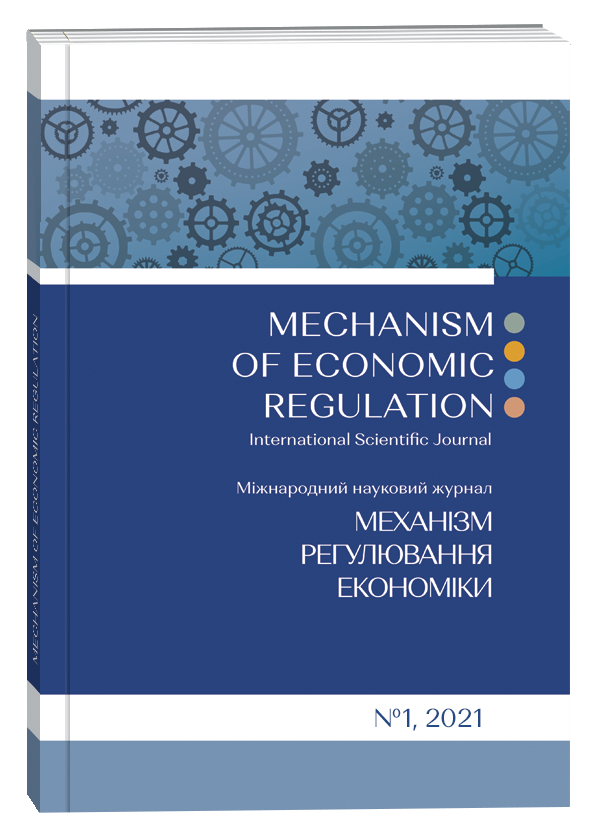STATE HOUSING POLICY: EUROPEAN FUNDING PRACTICES AND REALITIES OF UKRAINE
Abstract
The problem of citizen housing providing as a key prerequisite for sustainable development of Ukrainian cities has become especially relevant in the last decade, given a number of factors and objective circumstances. Such circumstances include both the global trend of urbanization and the challenges of today, which are the result of military aggression in the east of the country and the COVID-19 pandemic. All this raises the question of the need to intensify the state housing policy and finding non-standard models and additional reserves and funding sources for housing construction in Ukraine. The authors analysed the main approaches of European countries in the field of social housing. The existence of national peculiarities of the implementation of the state housing policy has been established, as well as the common features of the relevant public service provision by the governments of the EU member states to their citizens have been determined. The authors found that European countries, as a result of a long evolutionary path of development, mostly rely on the model of social housing sector support, which provides subsidies to both the developer during the construction of such housing and the citizens who find themselves in difficult circumstances. At the same time, social housing for the needy is not sold, but rented on preferential terms. The authors of the article on the basis of the Ukraine legislation analysis, according to the results of the proposed funding schemes effect assessment of social housing construction identified the main areas of optimization and further research. It is clearly illustrated that one of the ways to ensure the availability of such housing for those who need it is to reduce the cost of construction through the use of tax privilege for housing cooperatives, the benefits of small business taxation preferences and innovative methods of combining original organizational legal forms of doing business in combination with the use of modern financial instruments, such as derivatives.
References
Gordeyev, O. Providing Sustainable Local Development: Approaches, Principles, Components [Electronic resource]. Mode of access: http://www.kbuapa.kharkov.ua/e-book/db/20122/doc/4/04.pdf.
About the Concept of Sustainable Development of Human Settlements: Resolution of the Verkhovna Rada of Ukraine dated December 24, 1999 No. 1359-XIV [Electronic resource]. Access mode: https://zakon.rada.gov.ua/laws/show/1359-14#Text.
Poggio, T., & Whitehead, C. (2017). Social housing in Europe: Legacies, new trends and the crisis. Critical Housing Analysis, 4(1), 1-10.
Bergman, P., Chetty, R., DeLuca, S., Hendren, N., Katz, L., & Palmer, C. (2019). Creating moves to opportunity: Experimental evidence on barriers to neighborhood choice. https://doi.org/10.3386/w26164.
Botton, H. et al. (2020), Note d’analyse - Quelle évolution de la ségrégation résidentielle en France?, France Stratégie, URL: www.strategie.gouv.fr/sites/strategie.gouv.fr/files/atoms/files/fs-2020-na92-segregation-juillet.pdf.
Watts, B. and Fitzpatrick S. (2018), Fixed Term Tenancies: Revealing divergent views on the purpose of social housing, URL: https://ihurerblog.files.wordpress.com/2018/07/ftt_report_july2018_web2.pdf.
Liu E., Martin C. and Easthope H. (2019), Poor-quality housing and low-income households: Review of evidence and options for reform, URL: www.shelternsw.org.au/uploads/1/2/1/3/121320015/poor_quality_housing_report_2019.pdf.
Young, G., Donohoe, T. (2018). Review of Strategic Investment Plans for Affordable Housing. https://assets.ctfassets.net/6sqqfrl11sfj/5z9KbD26oLmZkBc4Gu0XVY/b9f8181d2e46312de00d405e125a341f/Shelter_AffordableHousingReport_Feb18.pdf.
Yevtukh T. (2009) World experience in using standards in mortgage lending. Bulletin of the UABS. Sumy, № 2. p.37-39.
Stashchuk O. (2019) Forms and methods of financing housing construction: characteristics and prospects of application. World of Finance. #3. pp. 99–107.
Statistical Yearbook of Ukraine for 2019 / State Statistics Service of Ukraine / ed. IE Werner; Resp. for the release of O.A. Vyshnevskaya. - K., 2020. - 465p.
Nielsen, R. and C. Haagerup (2017), “The Danish social housing sector: recent changes and future challenges”, Critical Housing Analysis, Vol. 4/1, pp. 142-149, http://dx.doi.org/10.13060/23362839.2017.4.1.333.
Gurría Angel (2020), Social housing: a key part of past and future housing policy, 32p., OECD 2020, https://www.oecd.org/social/social-housing-policy-brief-2020.pdf.
New construction of a 10-storey apartment building at the address: Sumy, st. Prokofiev, 43, Retrieved from https://prozorro.gov.ua/tender/UA-2019-02-12-003155-b.
Гордєєв О.К. Забезпечення сталого місцевого розвитку: підходи, принципи, складові [Електронний ресурс] / О. К. Гордєєв // Державне будівництво. - 2012. - № 2. -Режим доступу : http://www.kbuapa.kharkov.ua/e-book/db/2012.
Концепція сталого розвитку населених пунктів, затверджена Постановою Верховної Ради України від 24 грудня 1999 р. № 1359-ХІУ // Офіц. вісн. України. - 2000. - № 1. - Ст. 6.
Poggio, T., & Whitehead, C. (2017). Social housing in Europe: Legacies, new trends and the crisis. Critical Housing Analysis, 4(1), 1-10.
Bergman, P., Chetty, R., DeLuca, S., Hendren, N., Katz, L., & Palmer, C. (2019). Creating moves to opportunity: Experimental evidence on barriers to neighborhood choice. https://doi.org/10.3386/w26164.
Botton, H. et al. (2020), Note d’analyse - Quelle évolution de la ségrégation résidentielle en France?, France Stratégie, URL: www.strategie.gouv.fr/sites/strategie.gouv.fr/files/atoms/files/fs-2020-na92-segregation-juillet.pdf.
Watts, B. and Fitzpatrick S. (2018), Fixed Term Tenancies: Revealing divergent views on the purpose of social housing, URL: https://ihurerblog.files.wordpress.com/2018/07/ftt_report_july2018_web2.pdf.
Liu E., Martin C. and Easthope H. (2019), Poor-quality housing and low-income households: Review of evidence and options for reform, URL: www.shelternsw.org.au/uploads/1/2/1/3/121320015/poor_quality_housing_report_2019.pdf.
Young, G., Donohoe, T. (2018). Review of Strategic Investment Plans for Affordable Housing. https://assets.ctfassets.net/6sqqfrl11sfj/5z9KbD26oLmZkBc4Gu0XVY/b9f8181d2e46312de00d405e125a341f/Shelter_AffordableHousingReport_Feb18.pdf.
Євтух Т.О. Світовий досвід використання стандартів при іпотечному кредитуванні // Вісник УАБС / УАБС. Суми, 2009. № 2. С. 37-39.
Стащук О. Форми та методи фінансування будівництва житла: характеристика та перспективи застосування // Світ фінансів. 2019.№ 3. С. 99-107.
Статистичний щорічник України за 2019рік / За редакцією І.Є. Вернера. – Київ: Державна служба статистики України, 2020. – 465с.
Nielsen, R. and C. Haagerup (2017), “The Danish social housing sector: recent changes and future challenges”, Critical Housing Analysis, Vol. 4/1, pp. 142-149, http://dx.doi.org/10.13060/23362839.2017.4.1.333.
Gurría Angel (2020), Social housing: a key part of past and future housing policy, 32p., OECD 2020, https://www.oecd.org/social/social-housing-policy-brief-2020.pdf.
Нове будівництво 10-ти поверхового багатоквартирного житлового будинку за адресою: м. Суми, вул. Прокоф'єва, 43: [Веб-сайт]. 2021. URL: https://prozorro.gov.ua/tender/UA-2019-02-12003155-b


